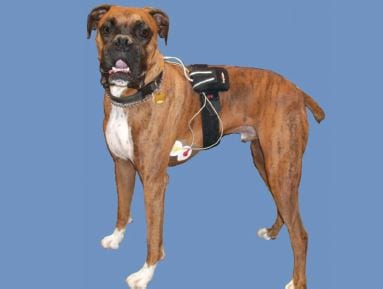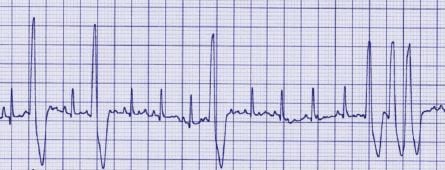Arrhythmogenic Right Ventricular Cardiomyopathy
What is Arrhythmogenic Right Ventricular Cardiomyopathy?
- ARVC a primary disease of the heart muscle.
- It most commonly affects the Boxer, however, it is also reported in the English Bulldog, American Staffordshire, and rarely in cats.
- It is characterized by the progressive replacement of normal heart muscle cells by fat and/or fibrous tissue.
- In more advanced cases, ARVC may also affect the left ventricle resembling another common cardiac disease: dilated cardiomyopathy.
- ARVC is an adult-onset inherited disease, with the presenting age and range of clinical symptoms in the offspring of affected parents being quite variable.
- The incidence of ARVC typically increases with age, with clinical signs often becoming apparent around middle age.
- Patients with the disease may present with asymptomatic cardiac arrhythmias that are noted on routine examination, fainting spells (syncope), congestive heart failure (coughing, respiratory difficulties, abdominal distention) or even sudden cardiac death.
How is it diagnosed?
- Definitive diagnosis can be quite challenging and is based on a combination of factors including:
- Family history of ARVC
- Presence of ventricular arrhythmias (abnormal heart rhythm)
- History of syncope (fainting) or exercise intolerance
- Exclusion of other diseases that may be responsible for similar clinical signs.
- An arrhythmia, and/or heart murmur, may be noted by your family veterinarian during a routine wellness visit prompting further testing.
- Symptoms of congestive heart failure
- An electrocardiogram (ECG) demonstrates the electrical activity of the heart. It is a quick, noninvasive test, useful for its ability to demonstrate VPCs and more complex arrhythmias. Unfortunately, any single ECG may be normal in these patients, as the arrhythmias seen with ARVC may be intermittent.
- Since a normal ECG does not rule out the presence of ARVC, placement of a holter monitor is considered the gold standard for diagnosis.
- A holter monitor is a device that records your pet’s ECG for a full 24 hour period while at home during routine activity. It provides important information for both the assessment and management of the arrhythmias commonly associated with ARVC.
- An echocardiogram, ultrasound of the heart, is also indicated for the diagnosis and management of ARVC. Even though most patients with ARVC will have a structurally normal heart, some will develop progressive heart muscle dysfunction and ventricular enlargement. This can ultimately lead to congestive heart failure.
![]() Printer-Friendly Version (Double-Sided)
Printer-Friendly Version (Double-Sided)




Genetic screening
- Please feel free to ask our professional staff about testing and breeding recommendations.
- Currently, a genetic test for one single mutation (Striatin) is available through the North Carolina State College of Veterinary Medicine Genetics Laboratory
- Multiple genetic mutations have been associated with this disease in both people and animals.
- A negative test for Striatin will not rule out the possibility of developing ARVC, not all dogs that test positive will develop clinically relevant disease.
How is ARVC Treated?
- Anti-arrhythmic medications have been shown to decrease the occurrence and the complexity of the arrhythmia, as well as the frequency of collapse events.
- Once anti-arrhythmic therapy is initiated, it is often recommended to repeat the holter monitor to assess for adequate 24 hour arrhythmia control. This is usually indicated two to three weeks after treatment has been started.
- Nutritional supplements may be recommended for your pet.
- Omega 3 fatty acid supplementation (fish oils) has been shown to help reduce the number of arrhythmias in both humans and dogs. The anti-inflammatory effect of omega 3 fatty acids also benefit our older patients with arthritis and skin disease.
- An amino-acid, L-Carnitine, may be recommended to patients with heart muscle dysfunction.
- Other prescription cardiac medications may be needed to help support heart muscle function.
- Unfortunately, medications have not been shown to alter the risk for sudden cardiac death.
What is the prognosis?
The prognosis of a patient with ARVC is unfortunately very difficult to predict. Many affected dogs will live for years with close monitoring and medical intervention when indicated. Certain medications may help slow the onset of congestive heart failure and progressive heart enlargement or dysfunction. CVCA’s goal is an open collaboration with you and your family veterinarian in order to optimize the quantity and quality of your canine companion’s life.
